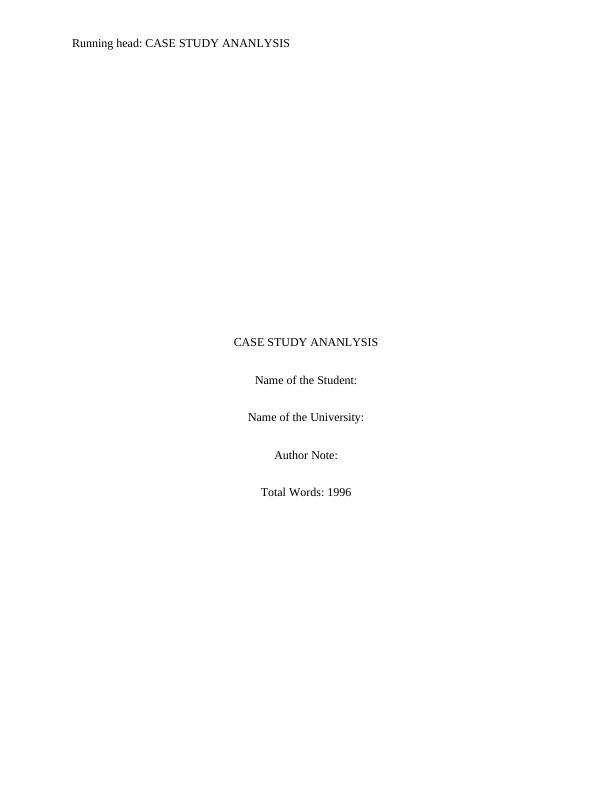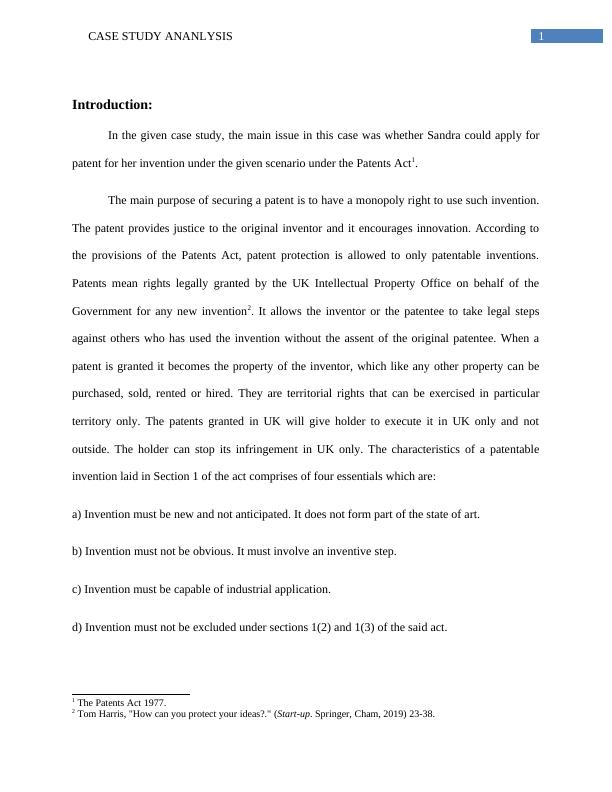Case Study Analysis: Patentability and Trademarks
10 Pages2255 Words354 Views
Added on 2023-04-06
About This Document
This case study analysis explores the issue of patentability for an invention and the use of trademarks for protection. It discusses the criteria for obtaining a patent and the importance of confidentiality agreements. It also examines the option of using trademarks to distinguish products. The case highlights the mistakes made by the inventor and the potential legal actions that can be taken.
Case Study Analysis: Patentability and Trademarks
Added on 2023-04-06
ShareRelated Documents
End of preview
Want to access all the pages? Upload your documents or become a member.
Advanced Intellectual Property Law
|10
|2272
|324
Law for Business Manager
|11
|3507
|85
TAXATION LAW TABLE OF CONTENTS INTRODUCTION 1 MAJOR PROJECT 1 Category 1 Category 2 - Assessable Income 1 Susie 1 Question 2 3 Baz Baxter 3 Category 2 - Allowable Deductions 5 Question 4 5 Waterside P
|12
|3664
|26
Report on Public Law - ECHR
|9
|2728
|72
Project Report on Business Law
|12
|3252
|36
CORPORATE GOVERNANCE AND FRAUD
|5
|688
|19



